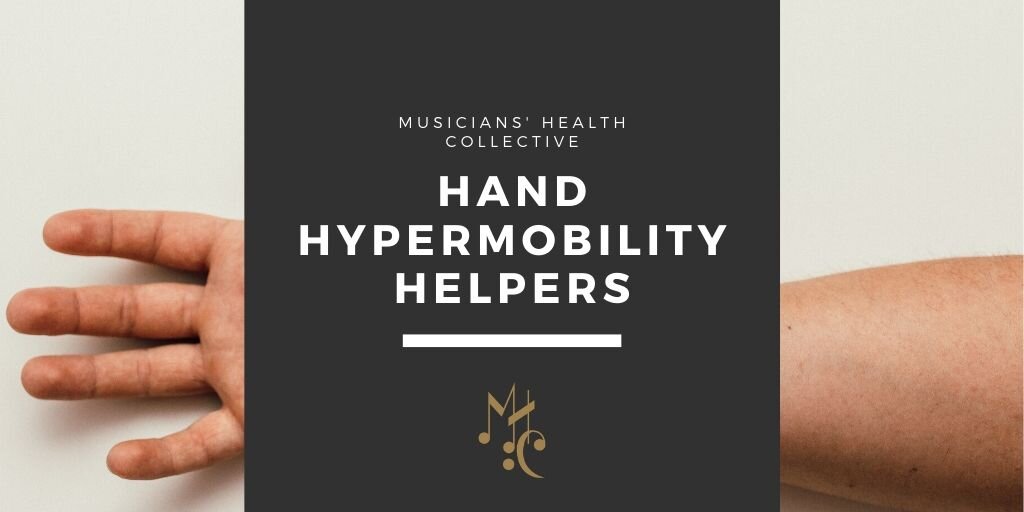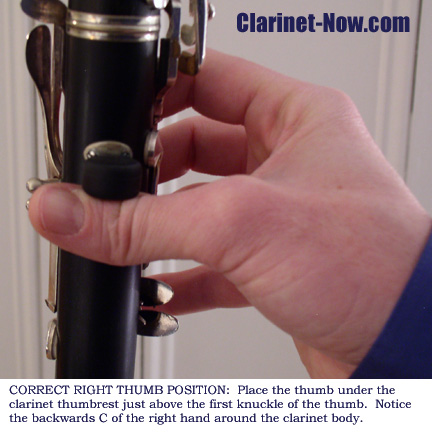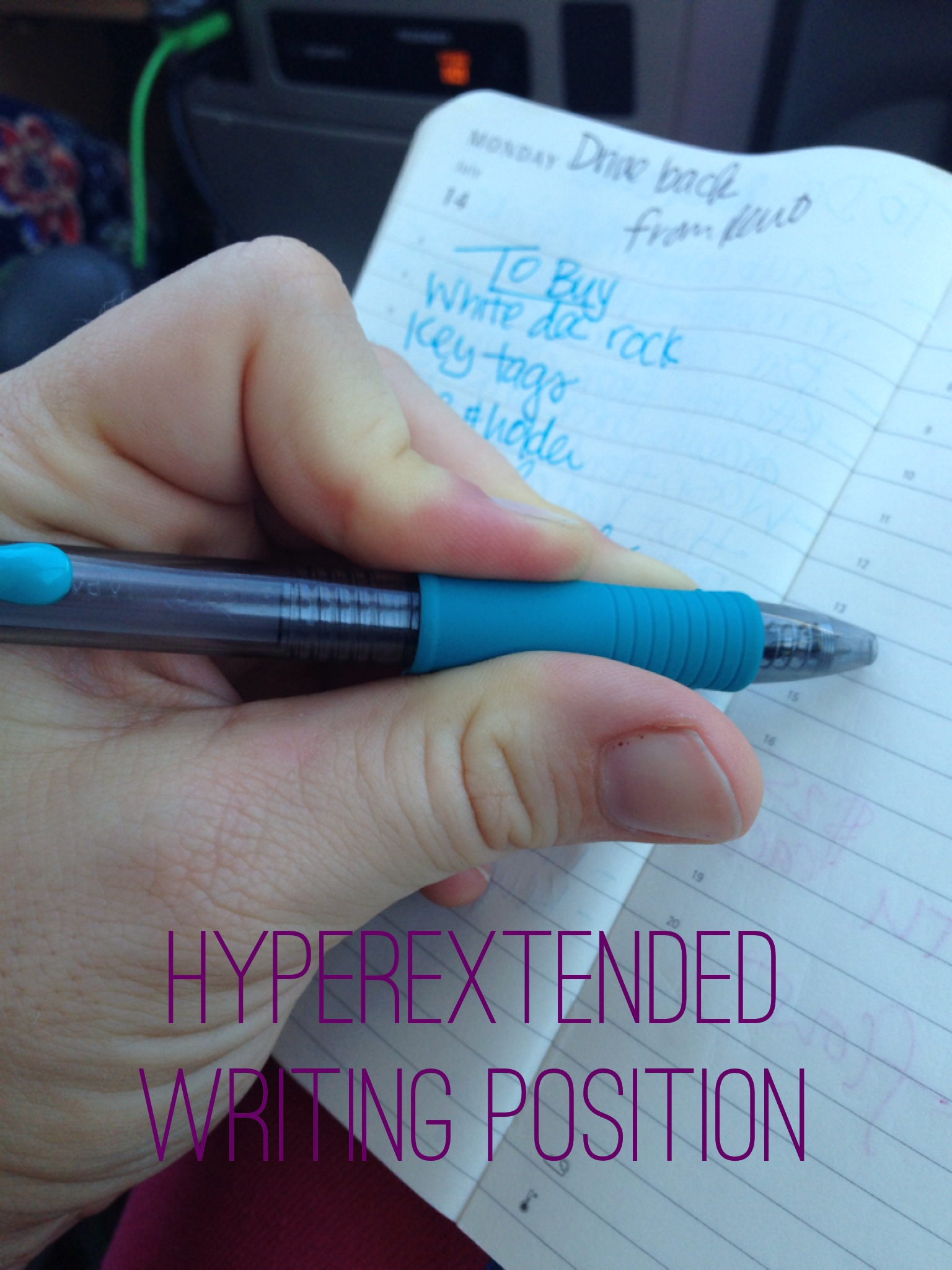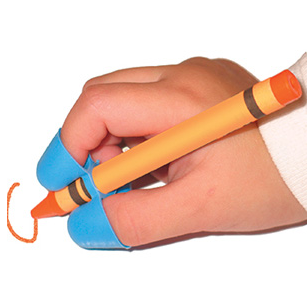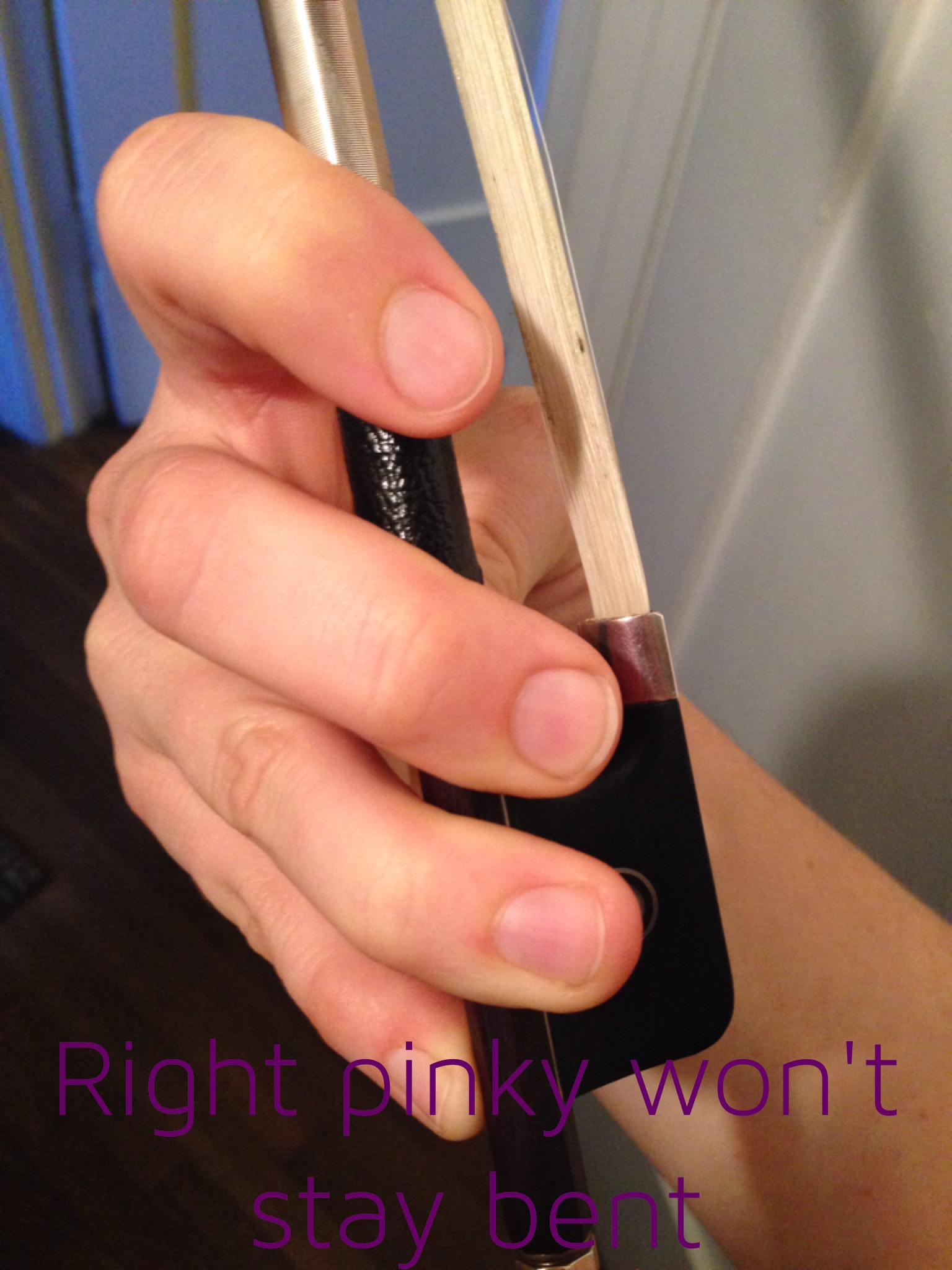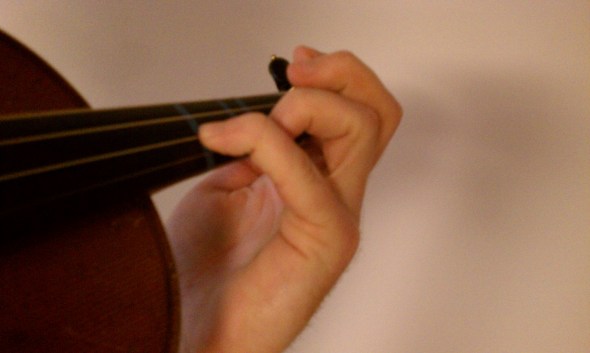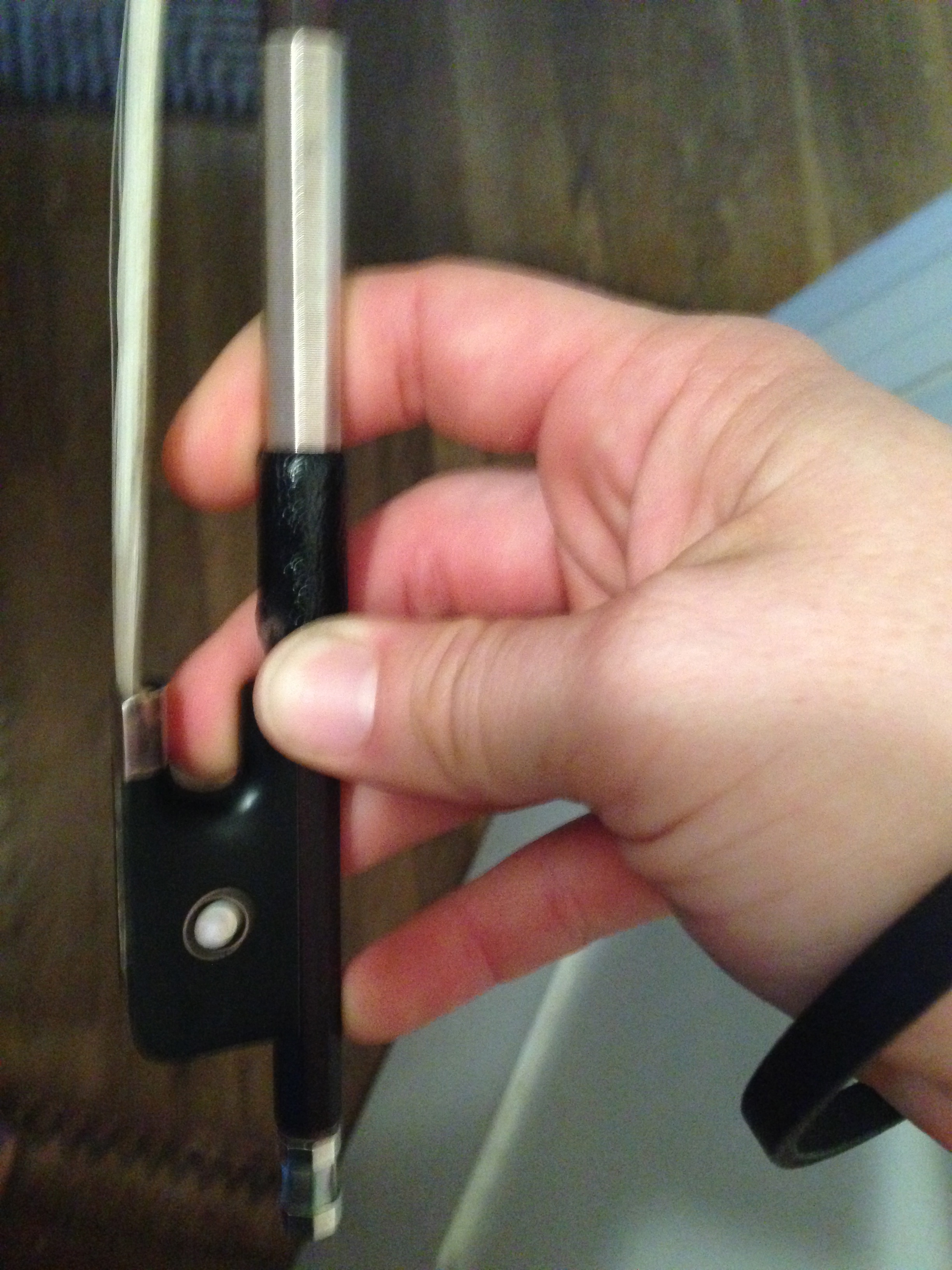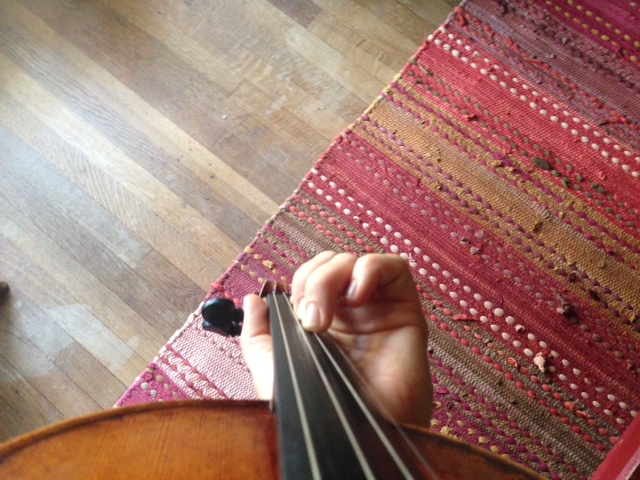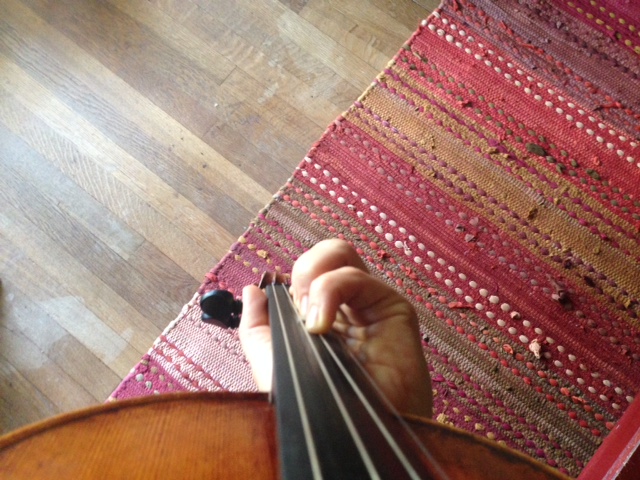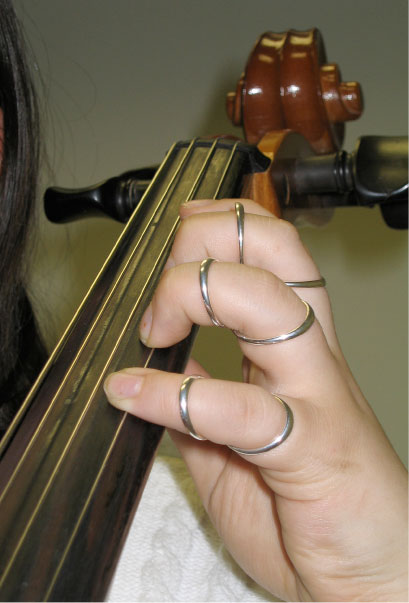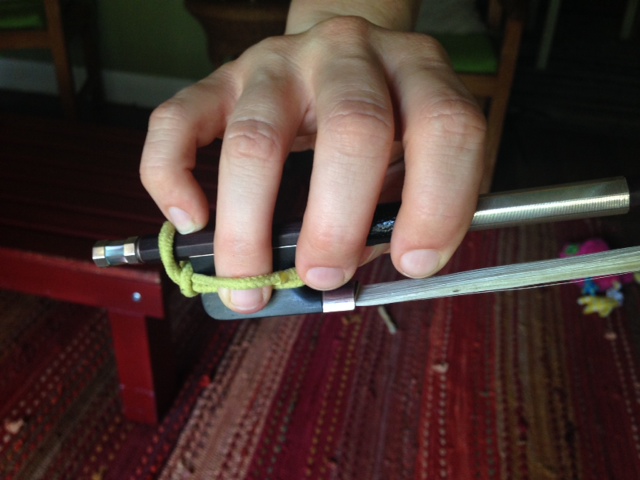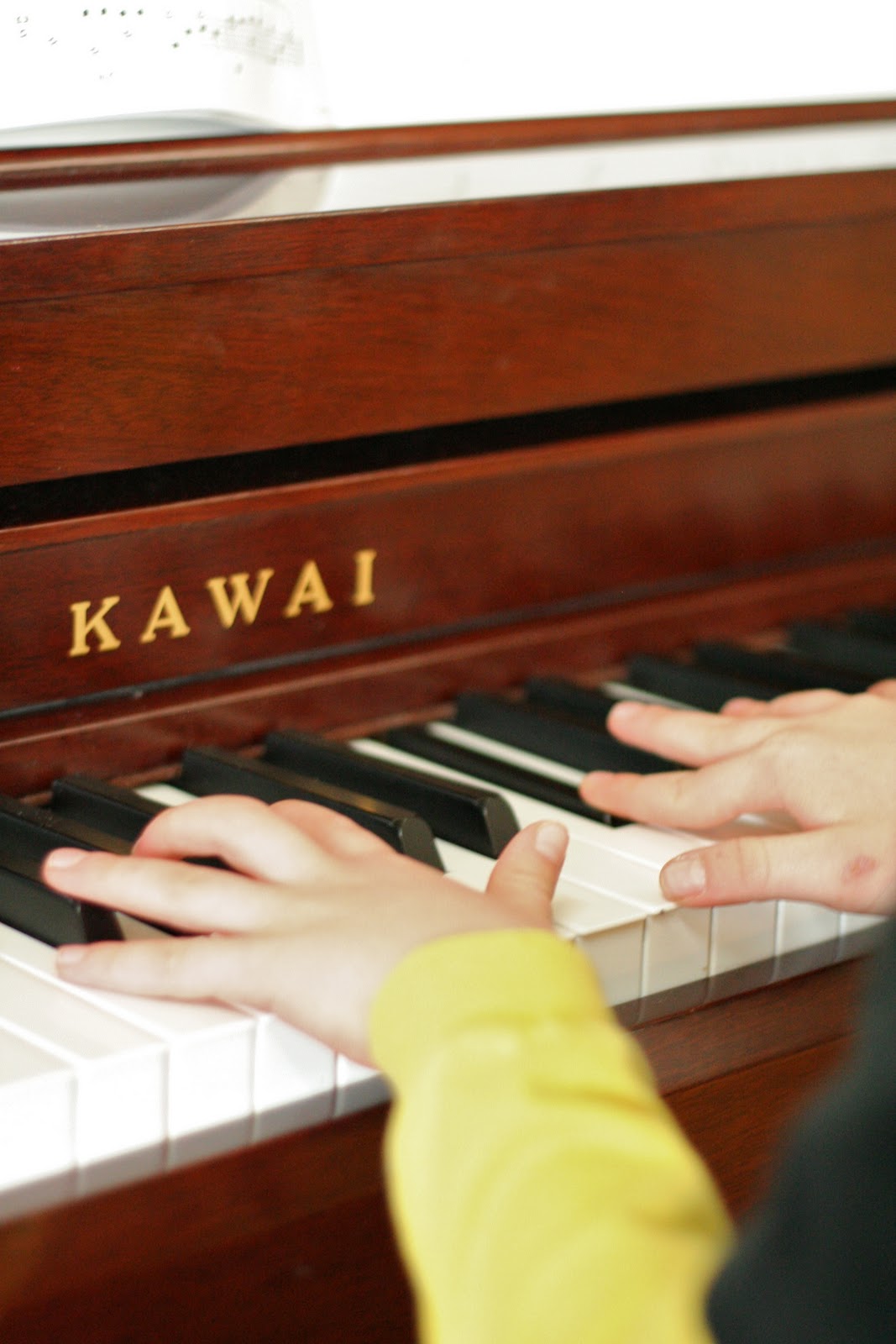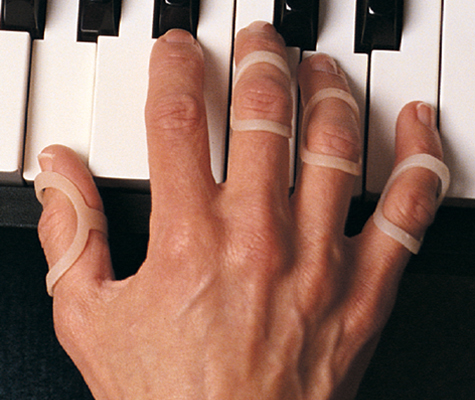Hand Hypermobility Helpers- Part 2
In my first post on hyper mobility, I addressed what it is in a more general setting: it can be a connective tissue disorder that affects collagen and elastin fibers and affects awareness of the body in the space (proprioception). Let’s focus on hyper mobile fingers and how they relate to music practice. Here’s a gallery of images related to setup, bowhold, and possible solutions for teachers and students.
When students have hypermobility, it means their joints are unstable because they don't have a “normal” end range. Their ligaments are not necessarily giving them feedback about where their body is in space (proprioception), and it may be difficult to organize movement. When you then ask unstable, weak joints to support weight or articulate, you are putting stress and strain on the joint, rather than strengthening the muscles to support the joint. What we want to do is strengthen the muscles as much as possible, build awareness of range of motion, move away from the lock out/end range zone, and then add load in the mid range, PROGRESSIVELY. The easiest way to do this is take the instrument away and isolate specific joint issues, especially if the instrument’s weight rests on the fingers.
Many PT's , OT’s and hand specialists use theraputty as a great way to get specific finger strength (it's basically a denser version of silly putty with different resistance levels). This would be great to have on hand in studio (no pun intended) and add to your weekly lessons, especially with growing kids. The most important moves to focus on would be the finger pinch, keeping the fingers curved. For string teachers working with wayward pinkies, I like this video about using a clothespin for resistance- also a great idea. (Also, take a look at how to teacher kids to hold pencils- great if you're a parent!)
I'm also a huge fan of bow hold buddies, especially for young children. This creates a pinky nest to help curve the pink, as well as provide a nook for the right thumb, especially if it locks out usually. They also make something called the "cello-phant" which looks interesting for cello folks. I’ve only used the violin/viola bow hold buddies, personally.
For flute, clarinet, and other wind instruments etc., I've also seen finger slings/rings/ etc, that can help to train the finger joints to stay bent and start to strengthen the muscles, as well as key extensions and pads that can help cover tone holes that are tough to cover with small hands or without contortions. Also ask the student to look at how they type, text, hold a pencil, etc. Sometimes the musical instrument technique is not the primary issue! If you can cultivate a bit of awareness in daily life, there can be huge transfers in a musical setting.
The bottom line is that continually locking out the joint puts strain on the joint, and can impact musical abilities as a result, of muscular weakness. Some people live a full pain free life with hypermobile joints, others deal with osteoarthritis early in life, or are diagnosed with Hypermobility syndrome, Ehler Danos, or another connective tissue issue. Helping students (or yourself) can improve your performance and prevent future pain. (And if you or a student is struggling with hypermobility, please consult a performing arts PT or OT for help!)

